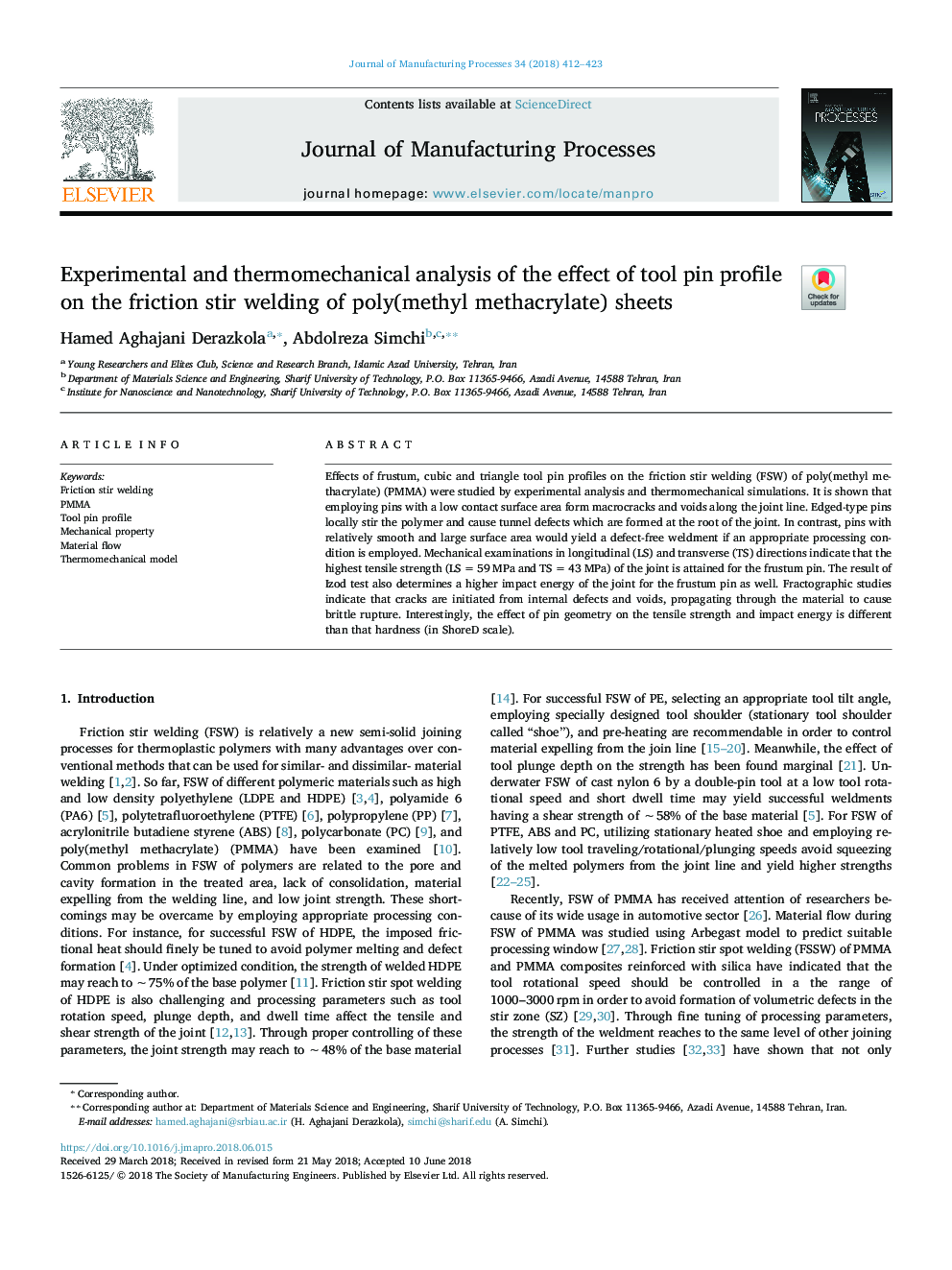| Article ID | Journal | Published Year | Pages | File Type |
|---|---|---|---|---|
| 8047891 | Journal of Manufacturing Processes | 2018 | 12 Pages |
Abstract
Effects of frustum, cubic and triangle tool pin profiles on the friction stir welding (FSW) of poly(methyl methacrylate) (PMMA) were studied by experimental analysis and thermomechanical simulations. It is shown that employing pins with a low contact surface area form macrocracks and voids along the joint line. Edged-type pins locally stir the polymer and cause tunnel defects which are formed at the root of the joint. In contrast, pins with relatively smooth and large surface area would yield a defect-free weldment if an appropriate processing condition is employed. Mechanical examinations in longitudinal (LS) and transverse (TS) directions indicate that the highest tensile strength (LSâ¯=â¯59â¯MPa and TSâ¯=â¯43 MPa) of the joint is attained for the frustum pin. The result of Izod test also determines a higher impact energy of the joint for the frustum pin as well. Fractographic studies indicate that cracks are initiated from internal defects and voids, propagating through the material to cause brittle rupture. Interestingly, the effect of pin geometry on the tensile strength and impact energy is different than that hardness (in ShoreD scale).
Keywords
Related Topics
Physical Sciences and Engineering
Engineering
Industrial and Manufacturing Engineering
Authors
Hamed Aghajani Derazkola, Abdolreza Simchi,
